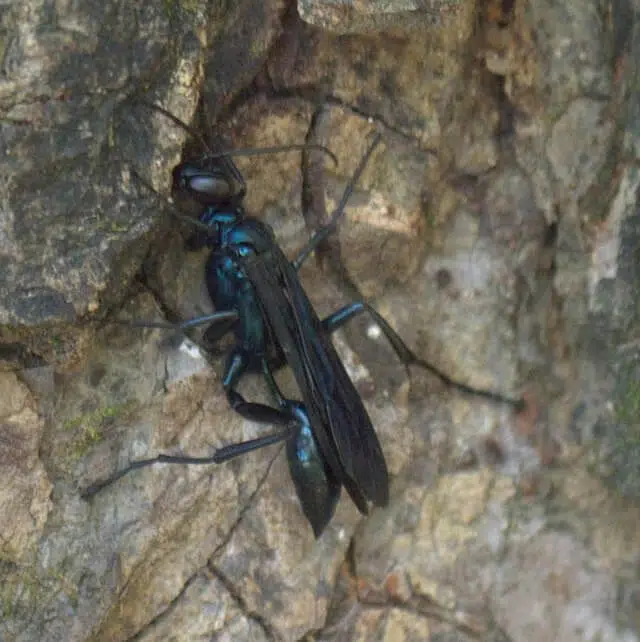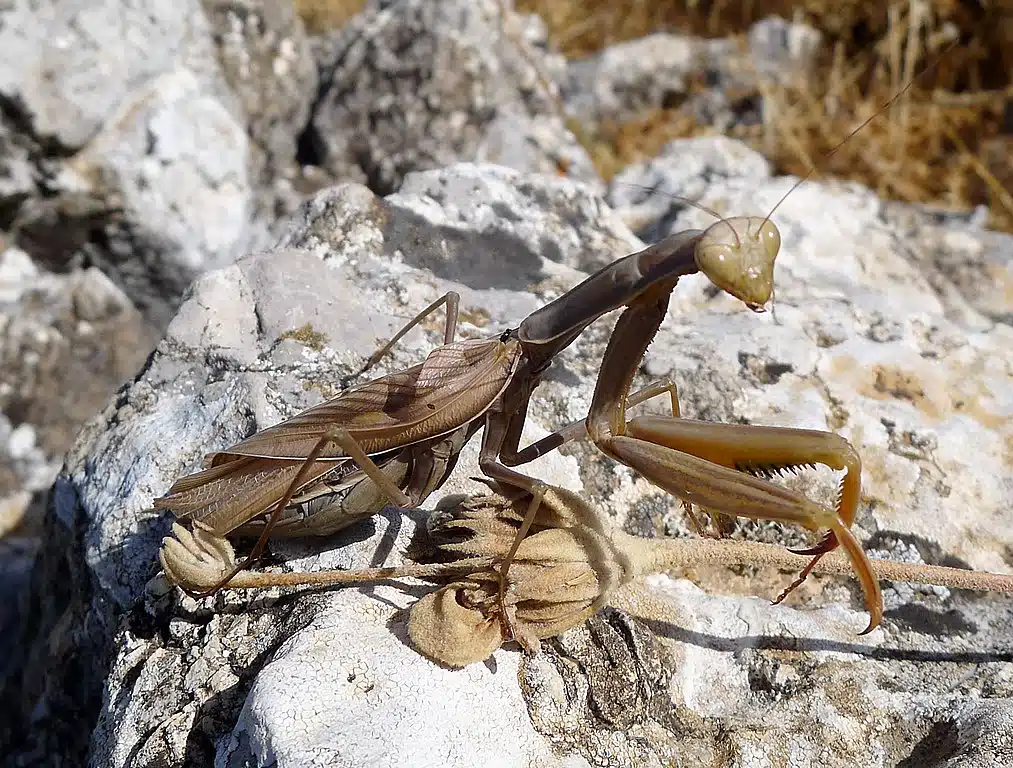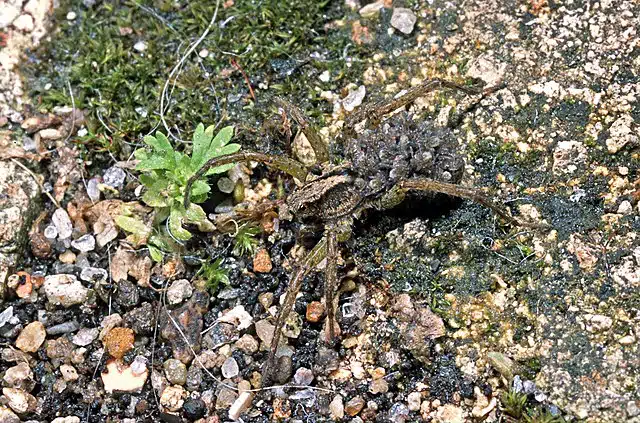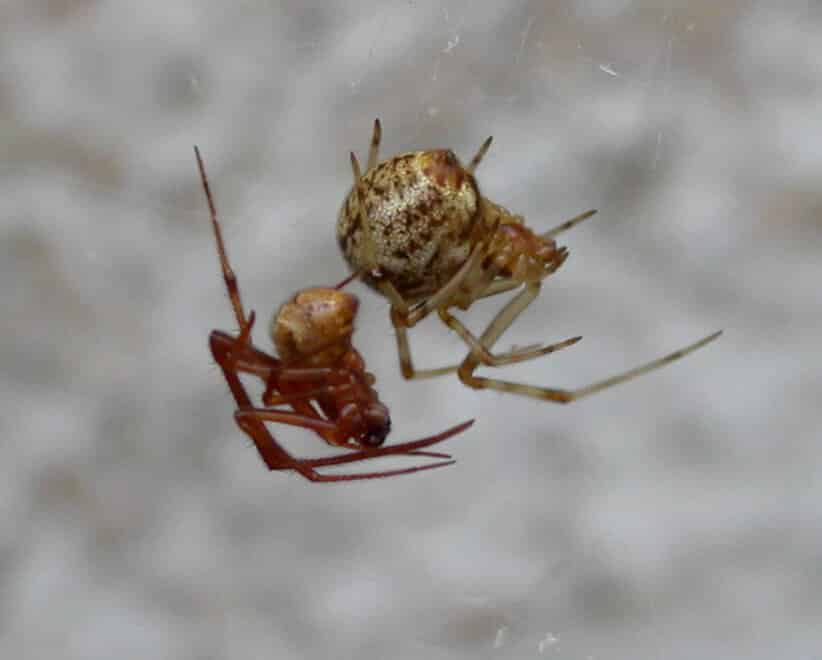The black widow spider is one of the most famous venomous spiders in the world. Most humans are scared of these venomous spiders, as are most insects and animals, but there are a few that eat the black widow. Wondering who is brave enough to take on a black widow?
Continue reading to find out more.
Table of Contents
What Eats Black Widows
There are a number of birds, insects, and mammals that kill and eat black widow spiders, these include:
1. Wasps
The black widow spider’s biggest enemy is the wasp, especially the spider wasp and iridescent blue mud dauber.
The iridescent blue mud dauber uses the black widow spiders in their nest, killing dozens each year. The spider wasp feeds on the spider, also using it in the nest and the flightless celionid wasp preys on the eggs of the black widow.

The blue mud wasp finds and brings the black widow back to the nest for their young. They hunt, paralyze and carry the black widow, using a specialized stinger to immobilize the spider. This makes it defenseless and easy for the larvae to feed off it.
These wasps are very clever in how they catch these venomous spiders. They tap on the spider web, which causes the spider to come out. This is when the wasp strikes. They stock up their nest with spiders before they produce eggs.
2. Praying Mantis

Not many insects are brave enough to prey on a black widow spider. Praying mantis are known for eating a number of different spiders, including the black widow. They usually go after smaller insects, but if a black widow is in its path, it will not turn it down.
The praying mantis is exceptionally careful when it comes to hunting the black widow, approaching from the rear. Approaching from the rear reduces the risk of coming into contact with the spider’s venomous sacs.
The mantis then paralyzes the spider, using its powerful mouth and raptorial forelegs. They rapture the exoskeleton of the spider.
3. Other Spiders
Spiders can see the bright red hourglass warning on the belly of the black widow, which is why most spiders avoid them. The black widow is one of its own worst enemies. The females are known to eat the males after feeding.
Young black widows are also known to feed on their brothers and sisters. Usually, thirty spiders will survive out of hundreds per egg sac.
Wolf Spiders

Wolf spiders ambush black widows, reducing the risk of being injected with venom. The black widow’s venom would easily kill the wolf spider. The wolf spider will only attack and eat the black widow if there are limited food options available.
House Spiders

House spiders are opportunistic eaters and will often visit other spiders webs, eating the host, their eggs, and young, along with any prey the host has already caught and stored. The house spider will clamber onto a black widow spider’s web to eat the host and any prey it may have caught.
Further Reading:
4. Birds
Birds, as with most other animals and insects, know the red hourglass warning on the belly of the black widow is a sign to stay away. Eating a black widow spider will not kill a small bird, but they will get exceptionally sick, enough to make the bird remember not to eat that type of spider again.
Some of the common birds that eat spiders, including the black widow spider. These birds include sparrows, bluebirds, wrens, blackbirds, and crows. Most of these birds feed spiders to their babies. Spiders make up seventy-five percent of the food these bird babies eat.
5. Mammals
A variety of mammals often capture or eat a black widow, including your pets. If you suspect your dog or cat has eaten a black widow, seek immediate veterinary attention. The black widow can bite on the way down, causing serious health problems for your pet.
In addition to this, most people believe that monkeys only eat fruit, but this is not true. Monkeys eat a host of flowers, nuts, fruits, and seeds, but they also eat birds’ eggs, lizards, insects, and spiders, including the accidental black widow.
6. Lizards
Most reptiles know to stay away from the venomous black widow, as it causes problems with their stomach. The Alligator Lizard is an exception. They have no problem eating a black widow.
The alligator lizard s able to counteract the black widow spider toxins. These lizards will eat anything that they find, including black widows, other lizards, birds eggs, and mice.
7. Frogs

Frogs have long and sticky tongues that are designed for capturing and eating a variety of bugs. Frogs are not worried about the dangers of what they are eating, eating anything they can fit in their mouth.
It doesn’t always go as planned, but thanks to the frog’s fast reflexes and strong jaw, they can hunt prey, such as the black widow, which could kill them if they had the chance.
The tongue of the frog has unusual tricks to catching a black widow spider. Their saliva is like water, surrounding and encasing anything it touches. The saliva is still attached to the tongue, which brings the tongue, saliva, and black widow into the mouth.
Due to the fact, the tongue is attached to the lower jaw and front of the mouth, the frog can rotate and flick outward very quickly. They snap their mouth shut once the spider is inside, crushing it instantly.
8. Humans
Many humans are not spidering lovers, often killing them rather than letting them stay in their homes. While humans do not eat black widow spiders, they do kill them out of fear.
When you think that an average person eats 52 spiders in their sleep each year. You don’t want any black widows hanging around.
The good news is that only four to eight people die of black widow spider bites each year. There are more than 2,500 bites reported to American Poison Control each year. Those who do not survive the bite, often have an allergic reaction or have compromised immune systems.
How Do Black Widows Defend Themselves?
Most people assume that a black widow spider will bite to protect itself. What you don’t know is how expensive venom is for the spider to make. They seldom use their venom when defending themselves, unless they have no other choice.
Web
The black widow spiders web is already a defense against predators. The female usually hangs upside down in her web, with the red hourglass marking on the show to warn any predators. If a predator becomes entangled in the web, the spider wraps more silk around it and kills it.
Retreat
A welcome surprise is that the black widow spider is not an aggressive species. Usually, if a predator comes too close, the spider will retreat away and hide. Sometimes dropping from the web to find a safe hiding place until the threat has passed.
Play Dead
That’s right, as one of the most venomous spiders in the world if the black widow spider feels threatened, they play dead. Playing dead is beneficial when the spider feels threatened.
Playing dead fools predators into thinking the spider is dead, as the predator attacks, the spider counter-attacks. In other instances, the predator isn’t interested in eating a dead spider.
Silk Flicking
Silk flicking is common with black widow spiders, usually after they play dead. Rather than bite the predator, the spider flicks silk strands at their predators. The silk strands entangle the predator, making it harder for them to capture and eat the black widow.
Summary
Black widow spiders have several predators that they have to protect themselves against each year. These non-aggressive, but highly venomous spiders are not extinct and occur in abundance.
Further Reading: